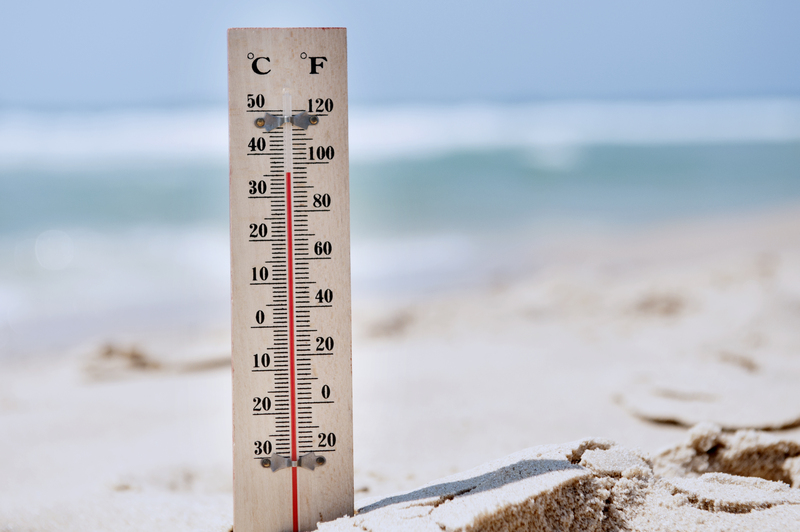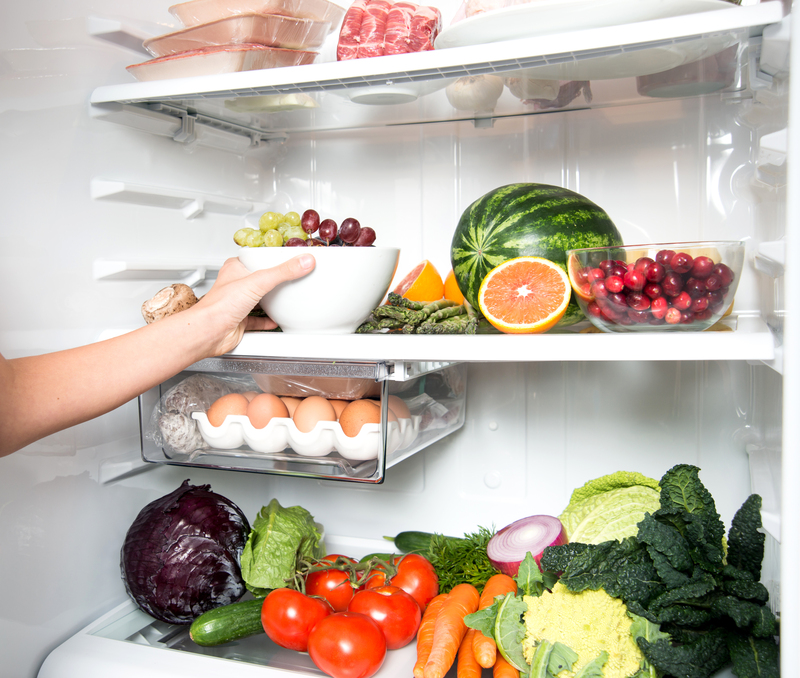Top Strategies for Storing Your Freezer Safely and Effectively
Posted on 17/06/2025
Top Strategies for Storing Your Freezer Safely and Effectively
Whether you have an upright freezer, chest freezer, or a compact freezer, proper storage is essential for maximizing efficiency, maintaining food safety, and reducing waste. With the right techniques and organizational methods, you can make the most out of your freezer space while keeping your foods fresh longer. In this comprehensive guide, we'll explore the top strategies for storing your freezer safely and effectively, ensuring your food stays organized, preserved, and easily accessible.
Why Proper Freezer Storage Matters
Effective freezer storage is about more than just keeping food cold. Storing your freezer safely and effectively minimizes the risk of freezer burn, extends food shelf life, and maintains nutritional value and taste. Improper practices can lead to food safety hazards, wasted space, and even higher energy bills. Let's break down why smart freezer storage is so important:
- Prevents Foodborne Illnesses: Maintaining correct temperatures and avoiding overstocking prevent bacterial growth.
- Reduces Waste: Organized freezers help you track what you have, so you use what you own before it spoils.
- Lowers Costs: Efficient packing and organizational systems reduce spoilage and duplicate purchases.
- Saves Time: Properly stored and organized food is quicker to find and thaw.

Essential Tips for Safe and Effective Freezer Storage
1. Set and Monitor the Right Temperature
The ideal temperature for storing your freezer is 0?F (-18?C) or lower. This temperature stops bacterial and mold growth, keeping food safe for prolonged periods.
- Install a freezer thermometer to ensure correct, consistent temperature.
- Do not rely solely on the freezer's built-in indicator.
- Check the temperature monthly and adjust as necessary.
2. Use Suitable Storage Containers and Packaging
Choosing the right wrapping and containers is key to maximizing longevity and protecting against freezer burn. For safe and effective freezer storage, use:
- Freezer-safe bags or airtight plastic containers: These prevent moisture loss and protect food flavor.
- Aluminum foil and freezer paper: Great for wrapping meat, bread, or baked goods for an extra barrier against air.
- Vacuum sealers: Offer the best protection by removing all air from packaging.
Tip: Avoid storing food in containers not rated for freezer use, as they can crack or allow in freezer odors.
3. Label Everything Clearly
Labels are crucial for effective freezer storage:
- Include date, contents, and portion size.
- Use permanent markers and freezer-safe labels.
- Group foods by date to follow the first-in, first-out (FIFO) principle.
4. Portion Food Before Freezing
Freezing food in meal-sized portions streamlines meal prep and minimizes waste. Cut, chop, or portion meals before wrapping and storing. This strategy is especially effective for:
- Meat and poultry
- Soups and stews
- Fruits and vegetables
- Leftover dishes
5. Organize for Easy Access and Visibility
Use an organized system so nothing gets "lost" in your freezer. Some top strategies for organizing your freezer safely and efficiently include:
- Use bins or baskets: Sort items by category (meats, veggies, prepared meals, snacks).
- Arrange by frequency of use: Place commonly used items within easy reach.
- Vertical storage: Store flat-packed bags standing up to maximize space.
- Use shelf dividers or stackable bins to keep smaller items together.
Food Safety and Preventing Cross-Contamination
Separate Raw and Cooked Foods
Storing raw and cooked foods separately is vital to avoid cross-contamination:
- Store raw meats on the bottom tier of your freezer, below ready-to-eat foods.
- Use sealed containers for cooked meals to avoid drips or spills.
- Even in the freezer, bacteria can transfer if foods are not well-sealed.
First In, First Out (FIFO) Rule
The FIFO rule (First-In, First-Out) helps prevent expired or forgotten food:
- Place newer items behind or below older stock.
- Check dates regularly to use the oldest items first.
- Organize freezers by date and content to reduce waste.
Advanced Techniques for Freezer Efficiency
Flash-Freezing for Better Quality
Flash-freezing means freezing foods quickly in a single layer before packaging. This approach:
- Prevents clumping for items like berries or chopped vegetables.
- Preserves texture and color by limiting ice crystal formation.
Spread foods on a baking sheet, freeze until solid, then transfer to a container.
Optimizing Space: The Flat-Pack Method
Flat-packing prevents bulky stacks and makes the most of your freezer's layout:
- Lay foods like soups, sauces, and ground meat flat in resealable bags.
- Stack vertically like books for easy visibility and access.
Inventory Management Tools
Keep track of what's in your freezer with:
- Dry erase freezer boards
- Printable inventory sheets
- Digital inventory apps
A freezer inventory avoids over-purchasing and helps with meal planning.
How Long Can You Store Food in the Freezer?
Not all foods last the same in the freezer. Here's a quick reference table:
| Food Type | Recommended Freezer Storage Time |
|---|---|
| Raw Beef, Lamb, Pork | 4-12 months |
| Poultry (whole) | Up to 12 months |
| Cooked Meat and Poultry | 2-6 months |
| Fish | 3-8 months |
| Bread and Baked Goods | 2-3 months |
| Fruits | 8-12 months |
| Vegetables (blanched) | 8-12 months |
| Soups and Stews | 2-3 months |
Always check for freezer burn, off-odors, or color changes before using stored food.
Defrosting and Thawing: Safe Methods
The way you thaw frozen food affects its quality and safety. The safest way to thaw is in the refrigerator, but here are all approved methods:
- Refrigerator Thawing: Place food on a plate to catch drips; allow several hours or overnight.
- Cold Water Thawing: Submerge sealed food in cold water, changing water every 30 minutes. Cook immediately after.
- Microwave Thawing: Only if you plan to cook food immediately after thawing.
Never thaw food at room temperature, as this increases bacteria risk. Do not refreeze food that has been fully thawed.
Freezer Maintenance for Optimal Performance
Regular Cleaning
Unplug and empty your freezer at least twice a year to remove frost build-up and clean shelves. Wipe with mild soap and water--avoid harsh chemicals--and ensure the freezer is fully dry before plugging in.
Defrosting Chest Freezers
Manual defrost freezers require periodic thawing. When ice buildup exceeds 1/4 inch, it's time to defrost:
- Unplug, remove contents (store in coolers), and let the ice melt.
- Mop up excess water and wipe dry before restarting.
Inspect Seals and Gaskets
Damaged seals cause temperature fluctuations and higher energy costs. Clean and inspect the gasket regularly for cracks or build-up.
Troubleshooting Common Freezer Storage Issues
Frost and Ice Buildup
If you notice frost growing excessively on shelves or containers:
- Check the door seal for gaps.
- Don't leave the door open longer than necessary.
- Let hot foods cool before freezing.
Unpleasant Odors
Strong smells often indicate old, spoiled, or unwrapped food. Clean the interior, dispose of expired items, and use a box of open baking soda to absorb odors.

Frequently Asked Questions About Freezer Storage
Can I Refreeze Food after Thawing?
Only if the food was thawed in the refrigerator and never reached temperatures above 40?F (4?C). Quality may deteriorate after repeated freezing.
Is It Safe to Overload the Freezer?
While a full freezer is more energy-efficient, overloading blocks air circulation and can cause uneven freezing. Leave space for air to flow around food packages for optimal safety and effectiveness.
How Can I Prevent Freezer Burn?
- Use airtight packaging and squeeze out excess air.
- Don't store foods longer than necessary.
- Label and date all containers.
Summary: The Ultimate Guide to Safe and Efficient Freezer Storage
Storing your freezer safely and effectively is a vital part of household food management. By following the strategies outlined in this guide--maintaining the correct temperature, using suitable packaging, keeping foods organized and separated, and performing regular maintenance--you ensure food stays safe, fresh, and accessible while minimizing waste and costs.
- Set and monitor freezer temperature at 0?F (-18?C)
- Use proper containers and label all foods
- Organize with bins and the FIFO rule
- Portion food and use advanced techniques like flash-freezing
- Thaw foods safely and keep your freezer clean
By incorporating these top strategies for storing your freezer safely and effectively into your kitchen routine, you'll streamline meal prep, extend the life of your groceries, and enjoy greater peace of mind every time you open your freezer door.

